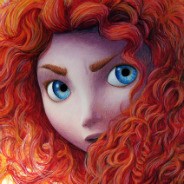Writing a Description A description creates a picture with words. Often when you write, you need to describe how something looks. A description can add important etails to a piece of writing. It can put a specific picture in your reader's nd. A description tells what some person, place, or thing looks like. A description helps the reader see, hear, taste, touch, and smell what is ing described, in other words, a description often appeals to one or ore of the senses.
1. Choose a topic of your description. Very often topics for descriptions are chosen for you. You may need to describe some animal in a biological report or some place when you prepare a talk on geography. If topic has not been chosen, you will have to find one.
2. Gather details about your topic. People create word pictures mainly by using details. You have learnt that details are the words and phrases that help the reader get a clear picture. They describe shapes, colours, sounds and smells. They describe actions that are special to the thing that is being described.
If you can, look at your topic or a picture of it as you write about it. If your topic is something you can hear or feel, listen to it or touch it. Make a list of details about your topic. Choose details that appeal to senses. Ask yourself the following questions:
What does my topic look like?
How does it sound?
How does it feel?
How does it taste?
How does it smell?
Decide which ones you want to answer in your description.
3. Make a writing plan of presenting your details. The details in a de¬scription must follow some order. Details can often be arranged in natural order. The order is called natural because it is the way you would probably notice things (details) without even thinking.
If you describe a person, natural order would be from head to toe. If you describe a building or a tree, natural order is from bottom to top. To describe a room, you might start with an overall idea of the room and then move from the door in a circle around the room from left to right. Other natural orders are front to back, inside to outside, and far to near. All these are natural orders. They follow the way you would ordinari¬ly look at something.
291
329
Ответы на вопрос:
Bigger, the biggest smaller, the smallest better, the best older, the oldest longer, the longest
Популярно: Английский язык
-
At school gym Drag the words into the correct order. get Most...
 Pomogite5pozalystaz05.12.2021 16:03
Pomogite5pozalystaz05.12.2021 16:03 -
Написати речення в теперішньому або теперішньому тривалому часі...
 Raffee28.07.2021 08:20
Raffee28.07.2021 08:20 -
Task 3. Grammar task. Toral (6) Choose the correct answer (A....
 qwertyuiop34226.06.2022 03:52
qwertyuiop34226.06.2022 03:52 -
Выручите а то мама отругает. Подставьте слова. a) cartridge b)...
 kirillovmatvey23.12.2021 06:22
kirillovmatvey23.12.2021 06:22 -
2 Вставьте подходящее одно слово • music • aspirin • buy • clothes...
 ВаняАВЕР200609.11.2021 00:00
ВаняАВЕР200609.11.2021 00:00 -
1. 1Where _____ you live? - I live in Ukraine. a. does b. is c....
 razebal19.05.2023 10:10
razebal19.05.2023 10:10 -
Question Choose the correct altenatives to complete the email...
 shutnick12102.06.2021 15:48
shutnick12102.06.2021 15:48 -
Решите тест по английскому!!!...
 LilianaLiLi111.09.2020 22:37
LilianaLiLi111.09.2020 22:37 -
Specification of Summative Assessment for term 4 Total markes...
 hohlov22816.06.2023 18:19
hohlov22816.06.2023 18:19 -
Write a letter to John about your studying English in summer at...
 sonka1001p0arxp06.09.2022 11:26
sonka1001p0arxp06.09.2022 11:26
